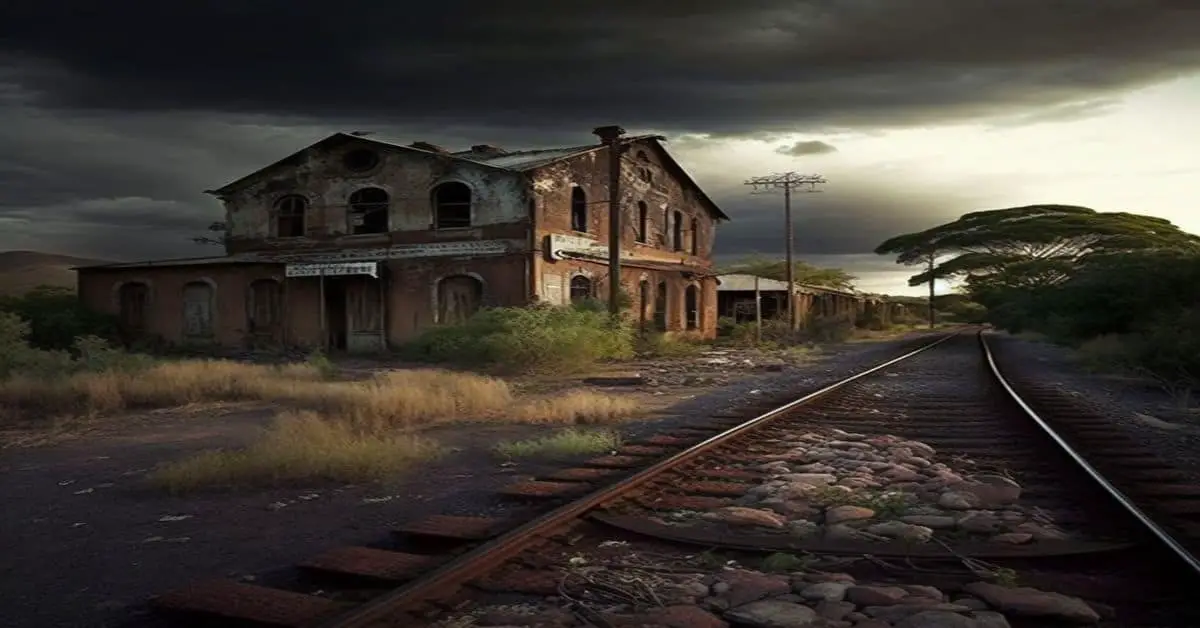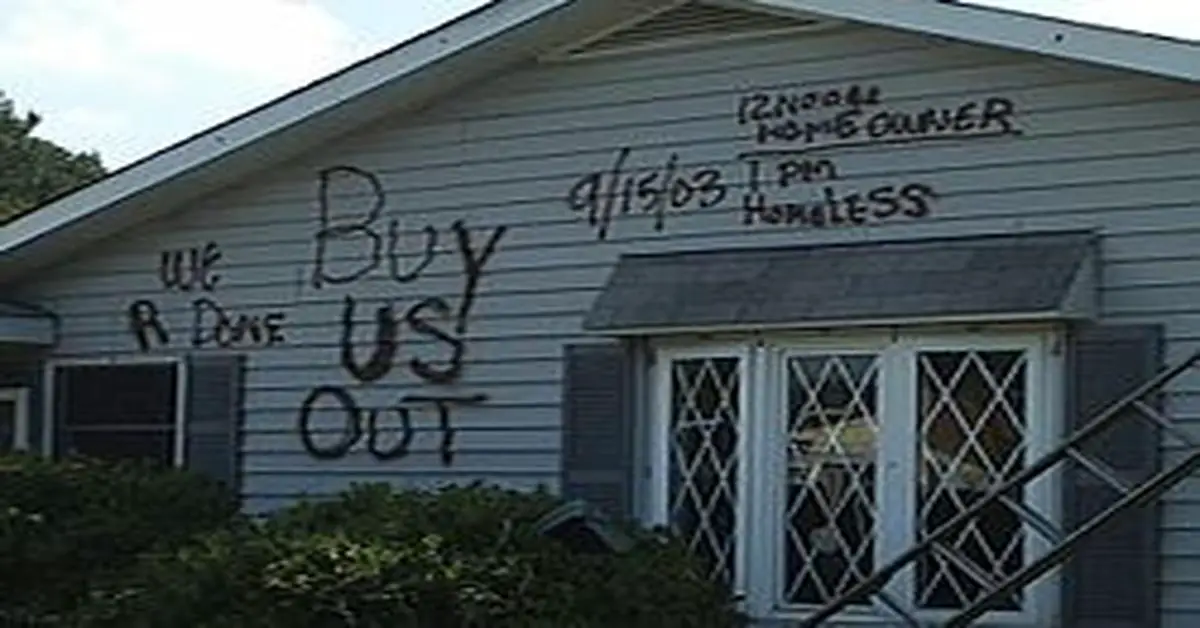Delaware is the second smallest state in the United States with less than 2,500 square miles; Rhode Island is first.
There are 8 ghost towns in Delaware, but the list is incomplete. The total number of ghost towns in Delaware is still unknown.
The Dutch were the first to settle the area of Delaware in 1631. Initially part of Pennsylvania, on June 15, 1776, the Assembly of the Lower Counties of Pennsylvania declared independence from British and Pennsylvania authority, thus founding its state.
Named after the governor of Virginia, Sir Thomas West, the area was known as the bay De La Warr, later changed to Delaware. Delaware was the first of the thirteen colonies to ratify the U.S. Constitution, becoming the first state to enter statehood on December 7, 1787.
Glenville, Delaware
Glenville, Delaware, is a neighborhood based on Bread and Cheese Island near Red Clay Creek. Not quite a town, but the subdivision has earned the ghost town title due to the natural disasters that have left the community abandoned.
Glenville homes share a backyard with Red Clay Creek, known for excessive flooding. When Hurricane Floyd, Tropical Storm Henri, and Hurricane Isabel hit in 1999 and 2003, plans to abandon the area were fully implemented.
After homes were vacant, Glenville was fenced off and began preparation to be turned into a park. There may be foundations and possible street remnants, but the houses were to undergo demolition to make way for park property.
Owens, Delaware
Owens, Delaware, also known as Owens Station, was once a stop between Ellendale and Greenwood for the Queen Anne’s Railroad. When the railroad stopped operations, the tracks were removed, and any land the railroad owned was returned to the last owner.
At the intersection of Beach Highway and Owens Rd, a few houses can be seen that remain from Owens Station, but the rest of the town has disappeared, just like the railroad tracks.
Zwaanendael Colony, Delaware
Zwaanendael Colony, Delaware, began in 1629 when two Dutchmen bargained with natives for a piece of land stretching from Cape Henlopen to the Delaware River. Samuel Godyn and Samuel Blommaert were the Dutch West India Company’s Amsterdam chamber directors when the bargain was made. In 1630, the purchase made by Godyn and Blommaert was ratified, and in 1631, Zwaanendael Colony was built.
Zwaanendael, Dutch for Swan Valley, did not last long as a settlement. With a small population of fewer than fifty people, the newly built colony had its share of work to do if it wanted to create the utopian society it was planned to be. Unfortunately, a misunderstanding between the settlement residents and a local Indian tribe changed the colony’s future.
During a meeting between the local tribe and the Dutch settlers, a chief removed one piece of a column painted with the arms of Holland. The chief meant no disrespect as he intended to create a tobacco pipe from the wood.
The men in charge of the house where the meeting was held were upset at what happened and made a fuss. Seeing the Dutchmen upset at the chief for what he had done that night after the natives had returned to their tribal area, they killed the chief to try and appease the men from the meeting.
When a token of the dead was brought back to the house, the men explained that the death was unnecessary, and they wished it had not been done. To honor mutual respect, the men forbade the chief from doing anything like that again. Friends of the murdered chief incited their friends to revenge.
One day, while the settlers were out working, three strong Indians returned to the colony with bearskins they wanted to exchange with the Dutchmen. During the exchange, a Dutchman descended stairs from his home’s loft when one of the Indians drew an ax and beheaded the man. All but two young boys had been lost in the unfortunate fight.
On December 5, 1632, one of the initial settlers who returned to Holland to gather more people for the new colony arrived back at Zwaanendael to find the settlement destroyed. After receiving needed provisions in Virginia, the colonists took the new colonists to New Amsterdam, New York City. The Zwaanendael land claims were sold to the Dutch West India Company.
In 1909, a monument commemorating the colony was put in place of the former settlement, more popularly known as today’s Lewes, Delaware, and in 1931, the Zwaanendael Museum was opened.
Abandoned And Haunted Locations In Delaware
If ghost towns are not enough excitement for the day, Delaware is full of fascinating, historical, abandoned, and haunted locations.
The Addy Sea bed and breakfast, named after John M. Addy, is one of the state’s most haunted places. The house was built in Bethany Beach in the year 1902. The sea views are one of a kind. The property has changed ownership several times since being built, and extensive restoration has kept the building up to expectations of the original design throughout the decades.
Three of the thirteen rooms are believed to be haunted: rooms one, six, and eleven. In room one, the copper bathtub has been known to be violently shaken. Whether staying in or passing by, room six will offer phantom organ music. No organ exists in the room, but the noise can be heard clearly and easily. The ghost in room eleven is thought to be that of Paul Delaney, a man who once worked at The Addy Sea.
Other paranormal activities include an apparition running through the hallways in the evening, mysterious music, and footsteps on the roof at night. The footsteps are believed to be from Kurt Addy’s ghost after dying from a fall off the roof many years before.
Cape Henlopen State Park in Lewes, Delaware, has a ghost soldier still on duty. Near Tower 12, there is a bunker underneath a dune. As people get too close to the soldier’s post, they will hear growling and a disembodied voice yelling at them. There have been photos and video clips that show a soldier’s face manifest in this area.
Among the top haunted places in Delaware is Bellevue Hall, located in the Bellevue State Park in Wilmington, Delaware. The Hall staff have commented on the paranormal activity being most active on the second and third floors of the home. These floors are known to be off-limits to the public. Bellevue Hall’s ghosts like to move chairs, mess with electricity, and disembodied voices can be heard screaming and laughing.
Catman’s Grave in Frankford, Delaware. While living, Long Cemetery’s caretaker spent significant time keeping would-be troublemakers off the property. He was noted to have a feline-like body when he was alive, and after death, the cat-like features are even more noticeable when he appears as a part cat, part man manifestation.
He still watches over the cemetery and chases away children wanting to party or vandalize the graves. There is a rumor that whoever knocks on the caretaker’s gravestone and disturbs his rest will have sudden unexpected vehicle problems that will make it difficult to leave the cemetery.
Bancroft Mills in Wilmington, Delaware, is quite an exciting sight to see. The mills along the Brandywine River can date back to 1787, when Delaware became a state. The buildings were closed in 1961, but select portions have since been renovated and turned into condominiums. Fire damage can be seen throughout the mills as multiple fires occurred throughout the properties’ operational time.
In Millsboro, Delaware, finding abandoned mills and remnants of the past is not hard. There were once over 15 operating mills in Millsboro, which helped the town earn its name. Situated at the headwaters of the Indian River, the location was ideal for milling. The buildings are mostly falling apart and rough-looking, but they are still exciting.

